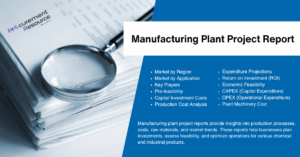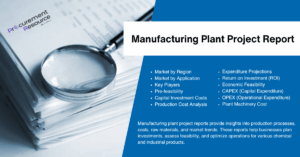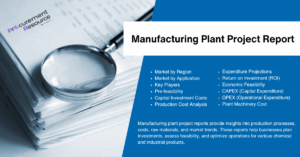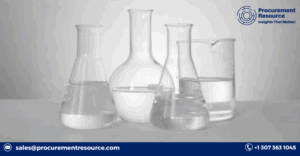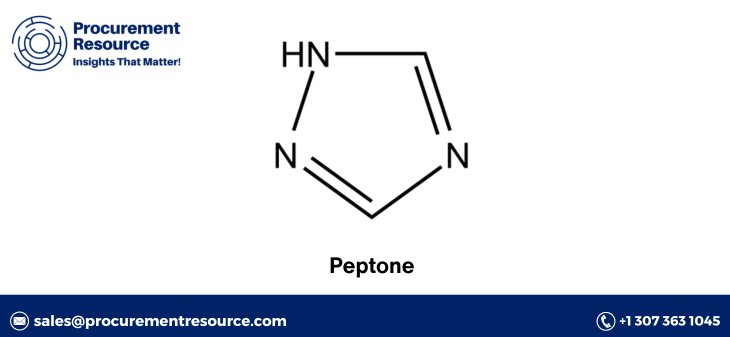
Peptone is a crucial nutrient source in microbiological culture media, derived from the partial hydrolysis of proteins such as meat, casein, gelatin, and soy. These hydrolyzed proteins serve as a rich source of amino acids and peptides, which are essential for the growth and maintenance of microbial cultures. Peptones are widely used in various fields including pharmaceuticals, biotechnology, and food industries. This report provides a comprehensive overview of the peptone production process, including detailed information on manufacturing, raw material costs, and the latest developments in the industry.
Manufacturing Report and Process
Step 1: Selection of Raw Materials
The first step in the production of peptones involves selecting high-quality raw materials. Common sources include meat, casein, gelatin, soy, and other protein-rich substrates. The choice of raw material largely depends on the specific application and desired properties of the peptone.
Step 2: Protein Hydrolysis
The selected raw materials undergo hydrolysis, a process that breaks down proteins into smaller peptides and amino acids. Hydrolysis can be achieved through various methods:
Request For Sample: https://www.procurementresource.com/production-cost-report-store/peptone/request-sample
- Enzymatic Hydrolysis: This method uses specific enzymes like proteases to hydrolyze proteins. Enzymatic hydrolysis is highly specific and produces peptones with minimal degradation of essential amino acids.
- Acid Hydrolysis: This involves the use of strong acids, such as hydrochloric acid, to break down proteins. Although it is a faster process, acid hydrolysis can lead to the degradation of some amino acids.
- Alkaline Hydrolysis: This method uses alkaline substances like sodium hydroxide. While it is less commonly used due to potential damage to certain amino acids, it is effective for specific types of peptones.
Step 3: Filtration and Clarification
After hydrolysis, the mixture contains both hydrolyzed proteins and undigested materials. This mixture is then filtered to remove any insoluble residues. Clarification is often achieved using techniques like centrifugation or microfiltration, ensuring a clear solution free of impurities.
Step 4: Concentration
The clarified solution is then concentrated to increase the peptone content. This is typically done using evaporation or ultrafiltration techniques. The concentration step is crucial for producing a final product with the desired peptone concentration.
Step 5: Sterilization
To ensure the peptone is free from microbial contamination, the concentrated solution undergoes sterilization. This can be achieved through autoclaving (using steam under pressure) or filtration through sterile filters.
Step 6: Drying
The sterilized solution is then dried to produce the final peptone powder. Spray drying is the most common method used, as it allows for the production of a fine, uniform powder. Alternatively, freeze-drying can be used for more sensitive products.
Step 7: Quality Control
The final product undergoes rigorous quality control testing to ensure it meets the required specifications. Tests typically include amino acid composition, solubility, pH, and microbiological purity. Only batches that pass all quality control tests are approved for distribution.
Raw Material Costs
The cost of raw materials is a significant factor in the overall production cost of peptones. Prices can vary based on the type and quality of the raw material, as well as market demand and supply conditions. Here is a breakdown of common raw materials used in peptone production and their cost factors:
- Meat: Meat-based peptones are often derived from beef or pork. The cost of meat can fluctuate based on livestock prices, which are influenced by factors like feed costs, weather conditions, and disease outbreaks.
- Casein: This milk protein is a common source for peptone production. The cost of casein is tied to the dairy market, including milk production rates and dairy product demand.
- Gelatin: Sourced from collagen in animal bones and skin, gelatin prices can vary based on availability and demand in the food and pharmaceutical industries.
- Soy: Soy-based peptones are derived from soybeans. Soy prices are influenced by agricultural conditions, global trade policies, and demand for soy products.
Overall, the choice of raw material not only impacts the cost but also the functional properties of the final peptone product. Manufacturers often balance cost considerations with the desired quality and application of the peptone.
Latest News
The peptone market is continuously evolving with advancements in production technologies and increasing demand across various industries. Here are some of the latest developments in the peptone production sector:
Advances in Enzymatic Hydrolysis
Recent research has focused on improving enzymatic hydrolysis techniques to produce peptones with enhanced functional properties. Innovations include the development of new enzyme formulations and optimization of hydrolysis conditions to maximize yield and quality.
Sustainable Production Practices
With growing environmental concerns, there is a significant push towards sustainable production practices in the peptone industry. Efforts are being made to reduce waste, improve energy efficiency, and utilize renewable raw materials. For instance, plant-based peptones from sustainable sources like soy and pea protein are gaining popularity.
Expansion in Biotechnology Applications
The biotechnology industry continues to be a major driver of peptone demand. Recent expansions in biopharmaceutical production, particularly in the development of vaccines and monoclonal antibodies, have increased the need for high-quality peptones. Manufacturers are scaling up production and enhancing product formulations to meet the specific requirements of biotech applications.
Market Growth and Investment
The global peptone market is experiencing robust growth, with increasing investments in research and development. Key players in the market are expanding their production capacities and exploring new markets to capitalize on the rising demand. Strategic partnerships and acquisitions are also shaping the competitive landscape, enabling companies to enhance their product portfolios and market reach.
In conclusion, the peptone production process involves a series of carefully controlled steps, from raw material selection to final product quality control. Understanding the costs associated with raw materials and keeping abreast of the latest industry developments are essential for stakeholders in the peptone market. As demand continues to grow, innovations in production technologies and sustainable practices will play a crucial role in shaping the future of peptone manufacturing.


